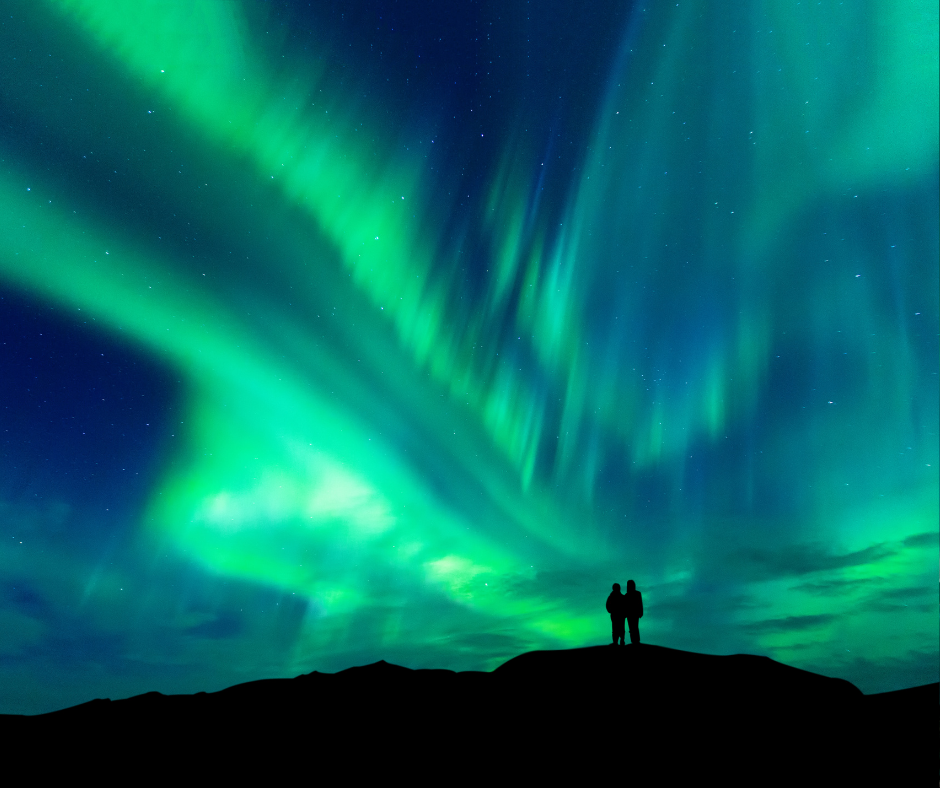Travel Bucket List: Viewing the Northern Lights Without Leaving the Country
Northern Lights Display
The Northern Lights (also known as the Aurora Borealis) are visible when particles charged by the sun enter the earth’s atmosphere and collide with gas. These collisions create a breathtaking light display in an array of colors ranging from neon green and pink to violet, blue and yellow, all visible 50 to 400 miles above earth’s surface.
Optimum Time to View the Phenomenon
October through April, when the skies are dark and clear, will give you the best chance to knock the lights off your bucket list. Grab a late night coffee in addition to your binoculars because between 10:00 pm and 2:00 am offers the best view of the light show, which can last anywhere from a brief 15 minutes to several hours. When planning, try to avoid full moon evenings as the optimum viewing days are when there is little to no moon.
Every 11 years, there is an increase in the sun’s solar flare activity. The result of these disruptions in the earth’s atmosphere are more bold, brilliant Aurora Borealis displays. Mark the calendar for 2025: the next year in the 11-year cycle.
Unfortunately for planners, the Northern Lights do not occur daily, and occasionally weeks or months go by without a spontaneous show. The University of Alaska and SoftServeNews.com both track solar activity and list Northern Light viewing predictions as far as 4 weeks out.
Are you Ready to Go?
The best spots to catch nature’s light display are the northern parts of Alaska, Canada, Siberia, Norway, Iceland and Greenland. But if this spectacular show is high on your “must see” list, don’t dust your passport off just yet. You can view them from several places without traveling out of the country or far off Alaska.
Cook County, Minnesota
Located on the northeastern tip of Minnesota along Lake Superior and relatively easy to get to, Cook County stretches 150 miles along the Canadian border and offers multiple viewing sights without needing to cross country lines.
Cook County, Minnesota
Aroostook County, Maine
Also located close to the Canadian border in northern Maine, this prime location is one of the most popular viewing sports in the northeast with many campsites available. A major benefit of viewing here is it’s sparse population; less traffic and lights makes for darker night skies and a more brilliant show.
Aroostook County, Maine
Michigan’s Upper Peninsula
Some argue that Michigan’s Upper Peninsula offers the most radiant view of the Northern Lights, quite possibly because if you happen to catch them along the shores of Lake Superior you will experience a “double show” as the lights reflect off the lake’s surface. As one of the most northern, unobstructed spots in the continental U.S., views from here are a staggering 180 degrees.
Upper Peninsula, Michigan
Northern Idaho
If you find yourself in Northern Idaho, you will run across multiple prime spots to catch the Northern Lights, as remote areas offer little light pollution. If a lakeview of the Aurora Borealis is what you are after, head to the Idaho Panhandle National Forest for one of nature’s incredible shows.
Northern Idaho
Glacier National Park
Montana’s well known park is an prime place to see the Northern Lights. McDonald Lake boasts one of the park’s best viewing sites, while Waterton-Glacier International Peace Park is a designated International Dark Sky Park so it offers excellent viewing opportunities.
Glacier National Park, Montana
Let’s Go!
If this phenomenon has been high on your travel bucket list but you thought you would need to leave the country to see it, look no further than the five above locations. While it is not a guarantee, with a little planning and research these spots in the continental U.S. will give you the best chance to view one of Mother Nature’s most brilliant displays.








